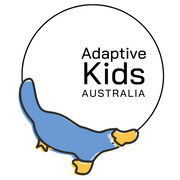
The Role of Paediatric Physiotherapy in Supporting Autism Spectrum Disorder (ASD)
The Role of Paediatric Physiotherapy in Supporting Autism Spectrum Disorder (ASD)
As a Paediatric Physiotherapist, I have had the privilege of working closely with Autistic children and their families. This report and downloadable PDF was created with the heartfelt intention of supporting and empowering parents and therapists in their advocacy for NDIS funding for crucial Paediatric Physiotherapy supports.
Here is the link for the PDF with the full report: The Role of Paediatric Physiotherapy in Supporting Autism Spectrum Disorder (ASD)
Report Summary:
Paediatric Physiotherapy plays a critical and multifaceted role in supporting children with Autism Spectrum Disorder (ASD). Through targeted interventions, physiotherapists address the unique motor, sensory, and social challenges faced by these children, ultimately enhancing their physical skills, social interactions, and overall quality of life. The comprehensive approach of Paediatric Physiotherapy not only meets the immediate needs of children with ASD but also provides long-term benefits that align with the goals and criteria of the National Disability Insurance Scheme (NDIS).
Importance of Paediatric Physiotherapy
- Motor Skill Development:
- Paediatric Physiotherapists utilise evidence-based practices to improve gross and fine motor skills, coordination, and balance. These enhancements are crucial for enabling children with ASD to participate in sports and physical activities, which are vital for their overall development and well-being (Fournier et al., 2010)
- Sensory Integration:
- Sensory processing issues are a significant challenge for many children with ASD. Physiotherapists use structured sensory integration techniques to help children better process and respond to sensory stimuli, reducing sensory-related distress and improving behavioral outcomes (Pfeiffer et al., 2011)
- Social and Emotional Benefits:
- Participation in sport skill programs led by physiotherapists enhances social skills and emotional well-being. Through group activities and play-based therapy, children learn to interact with peers, follow social norms, and build self-esteem (Staples & Reid, 2010)
- Long-term Health and Community Participation:
- Improved physical fitness and motor skills reduce the risk of chronic health conditions and promote an active lifestyle. Additionally, better motor and social skills enable greater community participation, enhancing the overall quality of life and reducing long-term healthcare costs (Macdonald et al., 2011)
- Alignment with Participant Goals:
- Physiotherapy interventions are tailored to meet the individual goals of each child, such as improved participation in school, sports, and community activities. This individualized approach ensures that supports are effective and relevant to the participant's aspirations (Staples & Reid, 2010).
- Evidence-Based Support:
- Extensive research supports the effectiveness of physiotherapy in addressing the core challenges faced by children with ASD. Studies demonstrate significant improvements in physical, social, and emotional outcomes, making physiotherapy a well-validated intervention (Fournier et al., 2010; Pfeiffer et al., 2011)
Paediatric Physiotherapy is an essential support for children with autism, providing significant benefits that are reasonable and necessary under the NDIS. By improving motor skills, enhancing sensory processing, and promoting social and emotional development, Paediatric Physiotherapy helps children with ASD achieve their full potential. This comprehensive approach not only meets the immediate needs of these children but also ensures long-term positive outcomes, aligning with the principles of value for money and effective support provision. Paediatric physiotherapy, therefore, stands as a vital component in the holistic care and development of children with autism within the framework of the NDIS.
References:
Fournier, K. A., Hass, C. J., Naik, S. K., Lodha, N., & Cauraugh, J. H. (2010). Motor coordination in autism spectrum disorders: A synthesis and meta-analysis. Journal of Autism and Developmental Disorders, 40(10), 1227-1240. DOI: 10.1007/s10803-010-0981-3
Pfeiffer, B., Koenig, K., Kinnealey, M., Sheppard, M., & Henderson, L. (2011). Effectiveness of sensory integration interventions in children with autism spectrum disorders: A pilot study. American Journal of Occupational Therapy, 65(1), 76-85. DOI: 10.5014/ajot.2011.09205
Schaaf, R. C., & Miller, L. J. (2005). Occupational therapy using a sensory integrative approach for children with developmental disabilities. Mental Retardation and Developmental Disabilities Research Reviews, 11(2), 143-148. DOI: 10.1002/mrdd.20067
Staples, K. L., & Reid, G. (2010). Fundamental Movement Skills and Autism Spectrum Disorders. Journal of Autism and Developmental Disorders, 40(2), 209-217. DOI: 10.1007/s10803-009-0854-9
Macdonald, M., Lord, C., & Ulrich, D. A. (2011). The relationship of motor skills and social communicative skills in school-aged children with autism spectrum disorder. Adapted Physical Activity Quarterly, 28(4), 285-297. DOI: 10.1123/apaq.28.4.285
Healy, S., Msetfi, R., & Gallagher, S. (2013). ‘Happy and a bit nervous’: The experiences of children with autism in physical education. British Journal of Learning Disabilities, 41(3), 222-228. DOI: 10.1111/bld.12053
